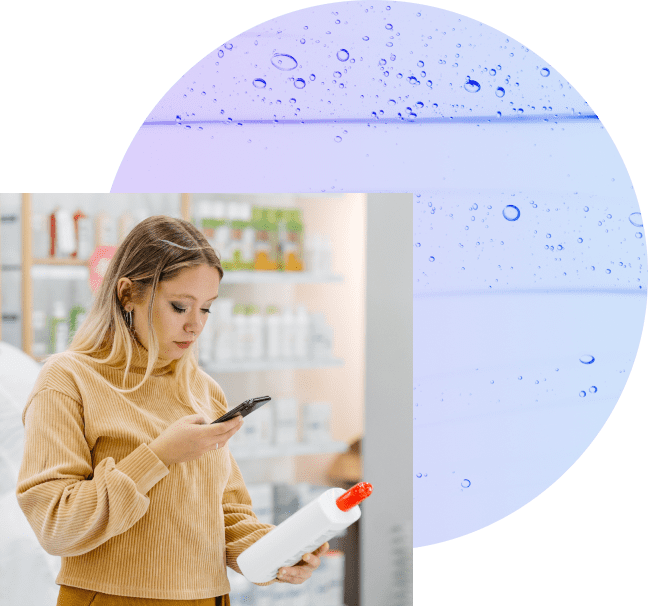Data: Fair
Acetone
Other Concerns
Neurotoxicity (low_moderate), Non-reproductive organ system toxicity (moderate), and Irritation (skin, eyes, or lungs) (high)SYNONYMS
This ingredient is not currently on EWG's Skin Deep Restricted or Unacceptable Lists.
Acetone is an aliphatic ketone.
Common concerns
See how this product scores for common concerns.
-
LOWCancer
-
LOWAllergies & Immunotoxicity
-
LOWDevelopmental and Reproductive Toxicity
-
LOWUse Restrictions
Ingredient concerns
- CONCERNS
- DATA SOURCES
Products with this Ingredient


| polish remover | 157 products |
| nail polish | 49 products |
| eye liner | 1 products |
| hair color and bleaching | 22 products |
| after shave | 1 products |
| nail glue | 1 products |
| nail treatment | 2 products |
| glitter | 6 products |
| hair spray | 5 products |
| concealer | 1 products |
Organ system toxicity (non-reproductive)


| CONCERN | REFERENCE |
|---|---|
| Known human respiratory irritant toxicant | Toxicological profile for Acetone(1994-01-01) |
| Classified as expected to be toxic or harmful | Environment Canada |
| Classified as medium human health priority | Environment Canada |
| One or more animal studies show classified as toxic effects at moderate doses (low dose studies may be unavailable for this ingredient) | Environmental Protection Agency (EPA) |
Irritation (skin, eyes, or lungs)


| CONCERN | REFERENCE |
|---|---|
| Human eye irritant - strong evidence | Globally Harmonized System- Classification & Labelling Codes(2012-01-01) |
| Classified as any irritant | EU GHS Hazard Labeling Codes |
Neurotoxicity


| CONCERN | REFERENCE |
|---|---|
| Moderate evidence of human neurotoxicity | Threshold Limit Value (TLV) Basis(2012-01-01) |
| nervous system - weight of evidence unknown/unassessed/unreview: published lit review or major tox study | US. National Library of Medicine, |
Miscellaneous


| CONCERN | REFERENCE |
|---|---|
| Occupational hazards related to handling | EU GHS Hazard Labeling Codes |
Multiple, additive exposure sources


| CONCERN | REFERENCE |
|---|---|
| Designated as safe for general or specific, limited use in food | US. Food and Drug Administration (FDA) |
Cancer


| CONCERN | REFERENCE |
|---|---|
| Not likely to be carcinogenic in humans | Environmental Protection Agency (EPA) |
Persistence and bioaccumulation


| CONCERN | REFERENCE |
|---|---|
| Not suspected to be bioaccumulative | Environment Canada |
Ecotoxicology


| CONCERN | REFERENCE |
|---|---|
| Not suspected to be an environmental toxin | Environment Canada |
- Toxicological profile for Acetone(1994-01-01)
- Environment Canada
- Environmental Protection Agency (EPA)
- Globally Harmonized System- Classification & Labelling Codes(2012-01-01)
- EU GHS Hazard Labeling Codes
- Threshold Limit Value (TLV) Basis(2012-01-01)
- US. National Library of Medicine,
- US. Food and Drug Administration (FDA)
Understanding scores
Cosmetics and personal care products are not required to be tested for safety before being allowed on the market. The Skin Deep® scoring system was designed to help the public understand whether a product is safe to use or whether it contains ingredients of concern.
Every product and ingredient in Skin Deep gets a two-part score – one for hazard and one for data availability. The safest products score well by both measures, with a low hazard rating and a fair or better data availability rating.
HOW WE DETERMINE SCORES
Hazard score
The Skin Deep ingredient hazard score, from 1 to 10, reflects known and suspected hazards linked to the ingredients. The EWG Verified® mark means a product meets EWG’s strictest criteria for transparency and health.
Data availability
The Skin Deep data availability rating reflects the number of scientific studies about the product or ingredient in the published scientific literature.











